The cost of Polypectomy includes:
Preoperative diagnostic tests cost (ultrasound, blood tests, MRI, etc.)
Surgery cost
Types of surgeries (diagnostic and operative)
Post-Operative cost (depends on the number of follow-up sessions)
Medicine cost (anti-inflammatory, painkillers, etc.)
Patient's hospital stay
The overall cost of the procedure also varies based on the patient's condition and preferences. Some of these factors are:
Type of hospital and room opted (General, Twin sharing, or Single room)
The severity of the disease
Post-surgical complication, if it happens (such as Haemorrhage, Uterine perforation, Infection, etc.)
Cost of Blood products (if required)
Age of the patient
An extended stay at the Hospital
Cost of Accommodation during follow-ups, in case the patient is not a local resident
A gynecologist performs the hysteroscopic polypectomy procedure.
Listing popular specialists:

Consultant, 35 years of experience

Fertility Surgeries Fibroid Removal Surgery Myomectomy Surgery Operative Laparoscopy Laparoscopic Vaginal Hysterectomy Laparoscopic supra cervical Hysterectomy Total Laparoscopic Hysterectomy Laparoscopic Tubal Ligation Colposcopy Diagnostic Hysteroscopy Female Sterilization - Tubectomy Laparoscopic Gynecological Surgery Laparoscopic Hysterectomy Laparoscopic Supracervical Hysterectomy Laparoscopic Treatment of Ovarian Cyst Removal Pelvic Surgery Pelvic Reconstructive Surgery Robotic Female Surgery or Advanced Robotics Endometriosis Surgery Therapeutic Hysteroscopy Uterine Fibroid Embolization (UFE)

Consultant, 39 years of experience

Laparoscopic Treatment of Ovarian Cyst Removal Pelvic Surgery Pelvic Reconstructive Surgery Robotic Female Surgery or Advanced Robotics Endometriosis Surgery Therapeutic Hysteroscopy Uterine Fibroid Embolization (UFE)
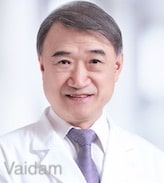
Consultant, 36 years of experience

Fetal malformation High-risk pregnancy Maternal disease Normal pregnancy Prenatal genetic diagnosis Fertility Surgeries Fibroid Removal Surgery Myomectomy Surgery Operative Laparoscopy Laparoscopic Vaginal Hysterectomy Laparoscopic supracervical Hysterectomy Total Laparoscopic Hysterectomy

Consultant, 32 years of experience

Cervical cancer Endometrial cancer Embryo freezing Artificial Insemination IUI (Intrauterine Insemination) Assisted Laser Hatching
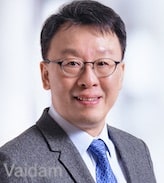
Consultant, 37 years of experience

Benign tumor Cervical cancer Endometrial cancer Endometriosis Fertile tumor Gestational trophoblastic disease Gynecologic cancer/gynecologic tumor Hydatidiform cancer Hydatidiform mole Uterine body cancer Uterine cancer Uterine cavity escape Vaginal cancer Vulvar cancer
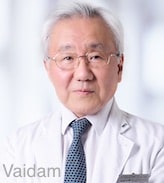
Senior Consultant, 43 years of experience

Geriatric Gynecology Menopause Osteoporosis Ovulatory Disorder Polycystic ovary syndrome Test-tube baby Uterine anomaly

Consultant, 36 years of experience

Choriocarcinoma Endometrial cancer Endometriosis Gestational trophoblastic disease Gynecologic cancer/gynecologic tumor Hydatidiform mole Ovarian Cancer/Ovarian Tumor Uterine body cancer Uterine cancer Vaginal cancer
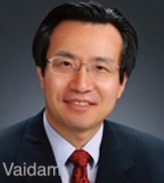
Senior Consultant, 20 years of experience

Fetal malformation High-risk pregnancy Maternal disease Normal pregnancy Prenatal genetic diagnosis Fertility Surgeries Fibroid Removal Surgery Myomectomy Surgery Operative Laparoscopy Laparoscopic Vaginal Hysterectomy Laparoscopic supracervical Hysterectomy Total Laparoscopic Hysterectomy
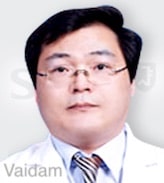
Consultant, 18 years of experience

Fetal malformation High-risk pregnancy Maternal disease Normal pregnancy Prenatal genetic diagnosis Fertility Surgeries Fibroid Removal Surgery Myomectomy Surgery Operative Laparoscopy Laparoscopic Vaginal Hysterectomy Laparoscopic supracervical Hysterectomy Total Laparoscopic Hysterectomy
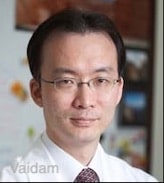
Professor, 23 years of experience

Infertility Fertility preservation Laparoscopic surgery Uterine myoma Ovarian tumor
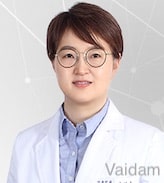
Professor, 26 years of experience

Gynecological Endoscopy Reproductive Endocrinology Fetal Medicine High-Risk Pregnancy Infertility Minimally Invasive Surgery
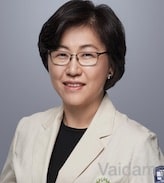
Professor, 31 years of experience

Menopause Osteoporosis Myoma Endometriosis Robotic surgery Laparoscopic surgery
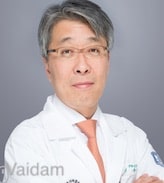
Professor, 31 years of experience

Uterine Cancer Ovarian Cancer Myoma Ovarian Cyst Laparoscopic Surgery Robotic surgery
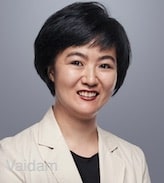
Professor, 28 years of experience

Uterine Cancer Ovarian Cancer Myoma Ovarian Cyst Laparoscopic Surgery Robotic surgery
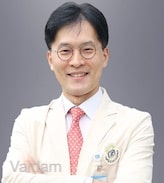
Professor, 28 years of experience

Robot-assisted surgery single port laparoscopic surgery gynecologic oncology(cancer) laparoscopic surgery for gynecologic cancer general gynecology

Professor, 39 years of experience

Uterine Cancer Ovarian Cancer Myoma Ovarian Cyst Laparoscopic Surgery Robotic surgery

Professor, 32 years of experience

Intracytoplasmic Sperm Injection Procedure ICSI Frozen Embryo Transfer (FET) Transvaginal Oocyte Retrieval (TVOR) (Oocyte Retrieval) Tubal Embryo Transfer (TET) Procedure GIFT and ZIFT Procedure Blastocyst Culture and Transfer Fertility Surgeries Fibroid Removal Surgery Myomectomy Surgery Operative Laparoscopy Laparoscopic Vaginal Hysterectomy Laparoscopic supra cervical Hysterectomy Total Laparoscopic Hysterectomy
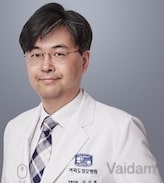
Professor, 23 years of experience

Intracytoplasmic Sperm Injection Procedure ICSI Frozen Embryo Transfer (FET) Transvaginal Oocyte Retrieval (TVOR) (Oocyte Retrieval) Tubal Embryo Transfer (TET) Procedure GIFT and ZIFT Procedure Blastocyst Culture and Transfer Fertility Surgeries Fibroid Removal Surgery Myomectomy Surgery Operative Laparoscopy Laparoscopic Vaginal Hysterectomy Laparoscopic supra cervical Hysterectomy Total Laparoscopic Hysterectomy
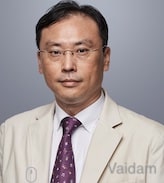
Associate Professor, 25 years of experience

High-risk Pregnancy Congenital Malformation Detailed Fetal Ultrasound Medication Consultation Myoma
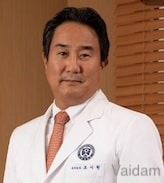
Professor, 24 years of experience

Endometriosis menopause and osteoporosis ovarian mass uterine fibroids high-risk pregnancy robotic surgery uterine embolization
The success rate of the procedure is 88-98%.
Recovery takes about 2 weeks. Patients may feel pain after the procedure.Taking the pain medication the gynecologist had prescribed can help.Our Services for Hysteroscopic Polypectomy in South Korea
Transparent - Professional - Without Hassles






NABH Certified Healthcare Discovery Platform
Vaidam is NABH certified healthcare discovery platform that will connect you to top-notch medical experts, hospitals, wellness options, and trusted travel partners to help identify and make the right healthcare choices.

Researched & Personalized Treatment Plan - Under One Roof
You can search for the best hospitals, read about them, view photographs of the facilities at the hospitals and the places at which the hospitals are located, and check the cost of treatment.

Quality Treatment Within Your Budget
As soon as you post an enquiry, the patient relation team will collect details from you, share them with the doctors and hospitals on Vaidam's panel, and get a personalized treatment plan. We research to get quality treatment within your budget.

Treatment to Travel
Vaidam concierge assists patients, to get medical Visa, the best airline fares and arrangements for your stay. Our concierge also helps you with daily travel, language, and food concerns. Vaidam does everything to be your perfect host. All of Vaidam’s services are free of cost to patients.

International Reach
Vaidam Health has network in 15+ countries, which includes India, Turkey, UAE, Germany, South Korea, Thailand, Malaysia, Spain.
Note: Vaidam Health does not provide medical advice, diagnosis or treatment. The services and information offered on www.vaidam.com are intended solely for informational purposes and cannot replace the professional consultation or treatment by a physician. Vaidam Health discourages copying, cloning of its webpages and its content and it will follow the legal procedures to protect its intellectual property